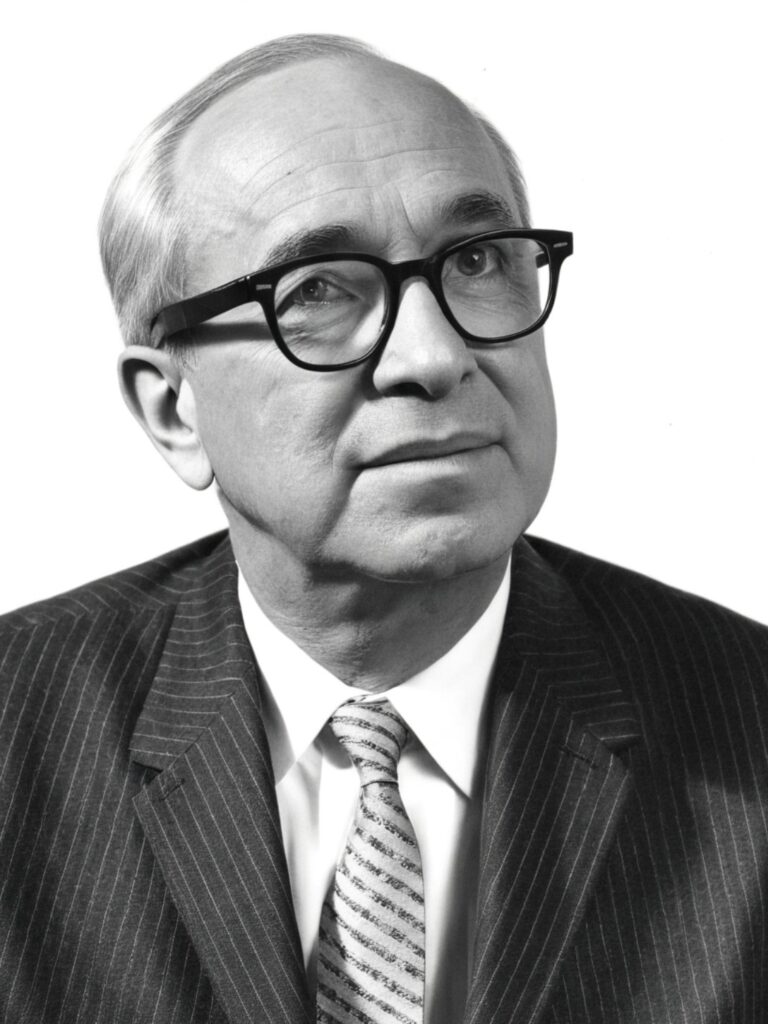Benjamin Sacks

Benjamin Sacks (1896-1971) was an American physician, cardiac pathologist, medical advisor and historian
Dr Benjamin Sacks was an American physician and cardiac pathologist who co-described Libman–Sacks endocarditis alongside his mentor Emanuel Libman in 1923. He began his career at Mount Sinai Hospital in New York following his medical training at Johns Hopkins University. A Phi Beta Kappa graduate, Sacks was renowned for his rigour in investigative medicine and was praised by colleagues as a “natural born leader of men” and exceptional teacher.
In the 1950s, chronic ill health forced Sacks to leave clinical practice. He redirected his formidable intellectual energy to Hollywood, where he served as a respected medical technical advisor in film, working with actors such as Cary Grant and Bing Crosby. Later, he became a prominent historian of the American Southwest, producing meticulous research on the Territorial history of Arizona. His annotated card catalogue of over 50,000 records remains a landmark in archival scholarship.
Sacks’ diverse career reflects a unique synthesis of scientific precision, artistic detail, and historical inquiry. His enduring legacy bridges pathology, film, and frontier historiography.
Biography
- Born August 14, 1896
- 1922 – M.D., Johns Hopkins School of Medicine; licensed in New York State and commenced medical career at Mount Sinai Hospital, New York
- 1923 – Defined Libman–Sacks endocarditis with his mentor Emanuel Libman (1872-1946)
- 1923–1950 – Clinical and academic roles at Mount Sinai Hospital; recognised for excellence in teaching and research.
- Early 1950s – Due to ill health, left clinical practice and began work in the film industry as a medical technical advisor. Worked with actors including Cary Grant, Bing Crosby, and Barry Fitzgerald. Known for his attention to detail, creating sets that were identical to a real hospital or doctor’s office.
- 1959 – Appointed inaugural historical consultant to the Arizona Historical Foundation
- 1964 – Published Be It Enacted: The Creation of the Territory of Arizona, awarded the Award of Merit from the American Association for State and Local History.
- 1970 – Published Arizona’s Angry Man: United States Marshal Milton B. Duffield, with a foreword by Barry Goldwater.
- Died May 2, 1971 – with research notes beside his bed, described as a researcher to the very end
Medical Eponyms
Libman-Sacks endocarditis (1924)
Libman-Sacks endocarditis, characterized by sterile, verrucous valvular lesions (Libman-Sacks vegetations) with a predisposition for the mitral and aortic valves. Libman-Sacks endocarditis is regarded as both a cardiac manifestation of systemic lupus erythematosus and, in recent years, of the antiphospholipid syndrome (APS). It is commonly complicated with embolic cerebrovascular disease.
Libman-Sacks vegetations: sterile fibrofibrinous vegetations that favor the left-sided heart valves and usually form on the ventricular surface of the mitral valve. A study of the echocardiographic findings of 342 consecutive patients with SLE found that 11% of these patients had Libman-Sacks vegetations
Fun Facts
In a letter of recommendation to the United States Surgeon General Hugh S. Cumming, Louis Gross (Director of Laboratories, Mount Sinai Hospital) wrote about Benjamin Sacks:
“Dr. Sacks is a man of striking personality. He is what is called a ‘natural born leader of men.’ He is an extraordinarily able teacher and is a constant stimulus to those about him. He is exceptionally well trained for investigative work”
When his medical career was cut short by ill health, Dr. Sacks turned his research talents and intellectual rigor to the history of the American West. In 1964, Sacks published Be It Enacted: the Creation of the Territory of Arizona. Described as a masterpiece of historical investigation and exposition for which he received the Award of Merit from the American Association for State and Local History.
Major Publications
- Libman E, Sacks B. A hitherto undescribed form of valvular and mural endocarditis. Arch Intern Med. 1924;33(6): 701–737
- Sacks B. The Pathology of Rheumatic Fever: A Critical Review. Amer. Heart Jour. 1926;1:750.
- Sacks B. Be it enacted: The creation of the Territory of Arizona. Arizona Historical Foundation. 1964
- Sacks B. Arizona’s Angry Man, United States Marshal Milton B. Duffield. Arizona Historical Foundation. 1970
References
Biography
- Redelings, Lowell E. “Men Behind the Scenes.” Hollywood Citizen-News April 9, 1951.
- Aufses AH Jr, Niss BJ. This House of Noble Deeds: The Mount Sinai Hospital, 1852-2002. 2002
- Williams C. The Sherlock Holmes of Research – A biography of Dr. Benjamin Sacks, M.D. 2008
- Benjamin Sacks Manuscript Collection: 1921-1971. FM MSS #110. Arizona Historical Foundation
Eponymous terms
- People Will Talk starring Cary Grant. 1951 [Technical advisor Benjamin Sacks]
- Gross, Louis, and Hugh S. Cumming. Letter. Sacks Manuscript Collection, Arizona Historical Foundation, Tempe.
Eponym
the person behind the name
Bret P. Nelson, MD, AEMUS-FPD, FACEP. Professor of Emergency Medicine, System Vice Chair for Education in the Department of Emergency Medicine, System Chief of the EM Ultrasound Division Mount Sinai Hospital | Sinai EM |

